
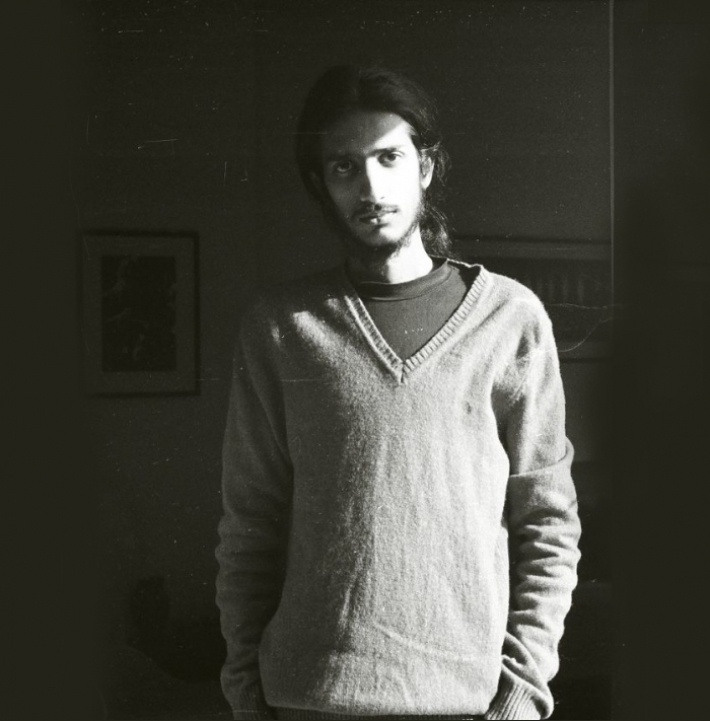
This article first appeared in the Rock Street Journal magazine, May-June 2012 edition.
“I was caught by cops the other day for 'drunk driving',” Shiv proclaims, just as we begin our what-would-turn-out-to-be-very lengthy, comprehensive, and entertaining conversation. “I had like one beer, and then this cop caught me driving. Isn't that under the legal limit?” he questions. I tell him it is. “Yeah well, I still told him not to take my RC and to settle the matter there itself, but he refused. Ironically enough, he took my documents, and told me to go home in my car. Why would he let me drive back right after catching me for drunk driving? Idiot,” he says with contempt. I suggest that the breathalyzers are often rigged or faulty and they'll show high alcohol content irrespective of how much you drink. “It's just very annoying and pointless,” he says.
Shiv Ahuja, the keyboard player of Delhi's proggy hard-rock band Five8, has been shooting gigs with his trusted DSLR for a while now, slowly making a name for himself in the gigging circuit for his detailed and action-packed black & white images, even hosting one solo and one group exhibition at TLR in hipster haven Hauz Khaz Village in Delhi. His training? “Mostly YouTube videos.” Today, he goes on tour with the Raghu Dixit Project and Menwhopause, and contributes regularly for a whole bunch of magazines.
“I don't think 'concert photography' is a genre yet. For me, it started with Naveen Dubey. I saw this guy with a ponytail and a camera at gigs and I wanted to be just like him. I was in school at the time, and I started shooting gigs which I would anyway go for.” Soon enough, he realized that having a camera meant that he could enter gigs for free, and he started shooting bands and handing them his photos for free. Eventually, he began putting up his stuff on Facebook, and he got great feedback for it. “People started mentioning that I was 'documenting the indie scene.' That's when I realized that this is what I want to do: I want to document the indie scene.”
“I had been speaking to some of my mentors, who pointed out that I had been shooting too much of the concert, and that the scene is not just made up of musicians. It's made up of venues, people who come for shows, etc., and a music scene is not just categorized by the music. I realized that for the first two years, I had just been shooting musicians; it was the same stuff over and over again.” That was when he began to direct his attention toward the overall picture of the scene.
Shiv stresses the need for developing relationships with bands as a photographer. His newer work is shot in more of a documentary style, capturing a movement of independent music, which informs the second TLR exhibition that he was part of this year – the first one, in 2009, showcasing only his solo works. “With Indian musicians, people tend not to take them as musicians you look up to. They aren't your heroes. So I felt the more you put it out there, the more people see their photos in public, then that feeling might come. When I was younger, I heard more music by Indian bands than from outside. I felt they were so much more accessible. So I feel if more people see these musicians in the public domain, and see it like it's legit, then they'll be attracted to the idea. Like there are people taking autographs of Raghu Dixit, hounding him, running after him. In my room, there's a photo of Rahul Ram (Indian Ocean), Motherjane, and a photo from Artistes Unlimited. It's not like I don't like John Lennon, but I don't want a print at three times the cost bought from Hauz Khas Village. I want stuff we've shot.”
He shoots regularly with Raghu Dixit Project and Menwhopause, enjoying a great working relationship with them, going on tour with them and getting candid shots of the band. He's very clear about the bands that value him, citing, in addition to aforementioned names, Advaita and Indian Ocean as well. “I get intimate pictures from them, and they value my work. So even if they ask me to shoot for free, I would gladly do it. We've reached the point where I can shoot Raghu at home or in the jam room, and he wouldn't even react to me pulling the camera out. Or Menwhopause, who'll be doing their own thing backstage, and I get meaningful pictures.”
One constant battle that he has struggled with is whether the quality of the photos is down to him or just the band. “The band is doing their stuff; how hard is it to take the picture? But then you try to show your own point of view. I've thought about this several times, and I've often felt it's not me. Ameeth Thomas is performing in Gargi College and he falls flat on the floor and I've taken a shot. Is it me or him? It's a bit of both, I think.” He finds fault in newer photographers, citing how they'll miss this aspect in their work. “They end up putting far too many photos, all of which end up looking the same. They shoot without making any statement. Everyone's shooting the same way, with similar compositions. Now I'll shoot 500 photos at a concert and put out two. I don't worry as much about misrepresenting a band as I did earlier, because I realize that my point of view in a photo is important too.”
There was a time when there were barely a couple of people shooting gigs – “I used to keep bumping into Laxman Anand, another photographer who I really looked up to. Today, you can't even stand at gigs. There are like six photographers crowding around. There's been an overload of concert photos, and everyone with a DSLR is shooting. I feel like I don't even have to explain what I'm doing anymore. Bands, managers, promoters, they're all already aware of it, which is great,” he says, preempting my question about whether this recent spurt in gig photography – promoted heavily by individuals through their respective Facebook pages – is healthy. “In general, I'm sort of OK with it. It doesn't bother me much; these are hobby photographers who'll disappear with time, which is the same as a lot of bands. Similarly, access to DSLRs has become easy. They're not full-time photographers.” But in the same breath, he adds: “What does bother me is that now there's a lot of undercutting happening. There are 15 people who'll shoot a band for free, so why would they come to better photographers who charge?”
Shiv is clear about the fact that shooting bands is something that he isn't that keen on anymore. He's done far too much of it, shooting bands for free in the beginning, and he feels bored of doing the same thing now. “Earlier, it was the easiest thing for me to call myself a concert photographer. Now, I'd rather call myself a photographer who's been documenting the scene,” he reiterates.
While photography is a full-time job for him, he does display a strong sense of empathy toward bands, and even publications. He has no issues with shooting bands for free, since he understands that most Indian bands have no money to pay photographers. Even magazines often have no budgets for stories, which he understands as well, giving him an air of maturity as he's ready to pick and choose his battles. Instead, he insists that it's the venues and promoters who need to approach photographers to shoot for them, promptly citing the example of how he shot all of OML's gigs a couple of years ago.
Copyright issues is another subject which evokes a lucid explanation from him, as he tries to balance out contrasting arguments in his head: “Earlier, I used to put this watermark on my photos which I uploaded online. None of the people I looked up to would upload anything on Facebook; they wanted their pictures to be viewed in the correct context. But then you're reducing the number of people who can view your pictures. On the other hand, less people can steal your photos. I've made my peace with it now; I've stuffed that watermark. If I upload a 600x800 image on Facebook, and someone steals it, they'll probably make it look worse and use it online. I've come to terms with the fact that this will happen. I'm like, 'fuck it'. It doesn't bother me. The people who actually care about your photos or think the photos have value wouldn't do that. It's really strange, but more often than not, it's the band which gives the pictures to the journalists, but it's the journalists we end up fighting with.”
He states that copyright infringements haven't affected him financially: “Every minor issue becomes a public thing these days, so people – magazines, websites – are scared now, and these violations have reduced.” What he's concerned about is the misrepresentation of his works: “Sometimes, bands will pick something off Facebook and give it to journalists, who'll end up plastering these low quality images on a full-spread. You don't want credit for that,” he emphasizes. Filled with optimism, Shiv is happy capturing the essence of a burgeoning scene in majestic B&W prints.
.
Previous Article Remembering Amit: Saigal Sa'ab Remembering Amit: Saigal Sa'ab
|
Next Article Best Indian Metal Albums - 2013 Best Indian Metal Albums - 2013
|
A stunning location, some great music, some not so much, rum in the hills, shattered bass drums, and memories of staring down to look at the clouds - the first edition of the Celeste Music Festival, held at the George Everest House in Mussoorie, was a grand success. Aditya Varma was there to witness the ins and outs; below are his thoughts.
Bhanuj Kappal went to the beautiful valley of Ziro, Arunachal Pradesh, for the second edition of the Ziro Festival of Music, featuring a host of indie acts from the country, as well as a visit by Lee Ranaldo and The Dust, which has Lee Ranaldo and Steve Shelley (formerly of Sonic Youth!). He came back a changed man, and has jotted down a comprehensive list of things he learned at the festival. (Part II here.)
Bhanuj Kappal went to the beautiful valley of Ziro, Arunachal Pradesh, for the second edition of the Ziro Festival of Music, featuring a host of indie acts from the country, as well as a visit by Lee Ranaldo and The Dust, which has Lee Ranaldo and Steve Shelley (formerly of Sonic Youth!). He came back a changed man, and has jotted down a comprehensive list of things he learned at the festival. (Click here for Part I)
Swedish metal giants Meshuggah are all set to return to India to play at the Bacardi NH7 Weekender festival. They will be performing…


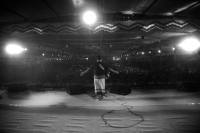
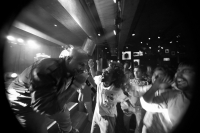
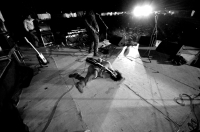
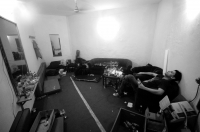
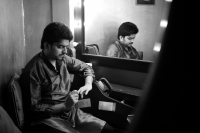

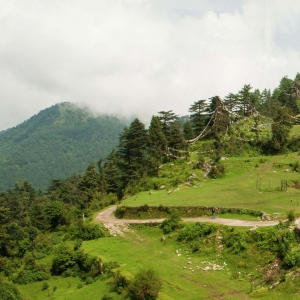
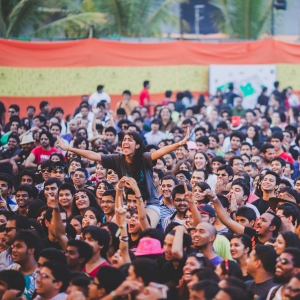
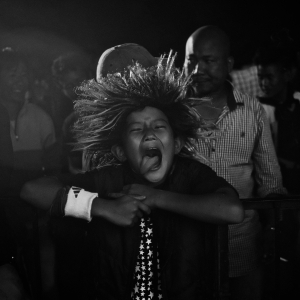
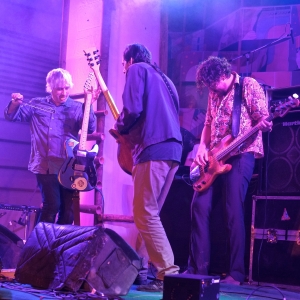
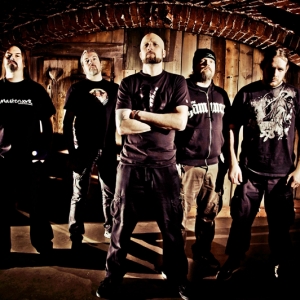
Leave a comment